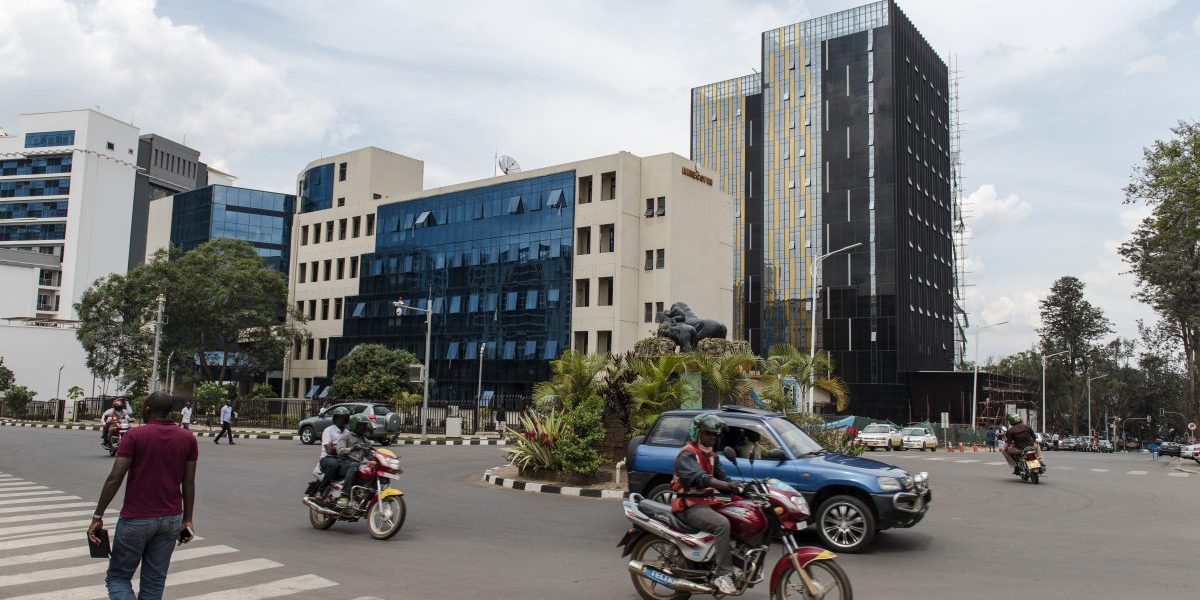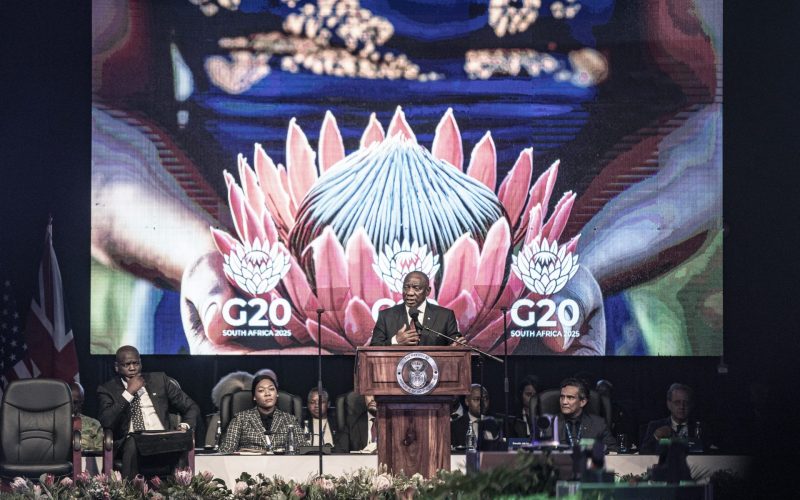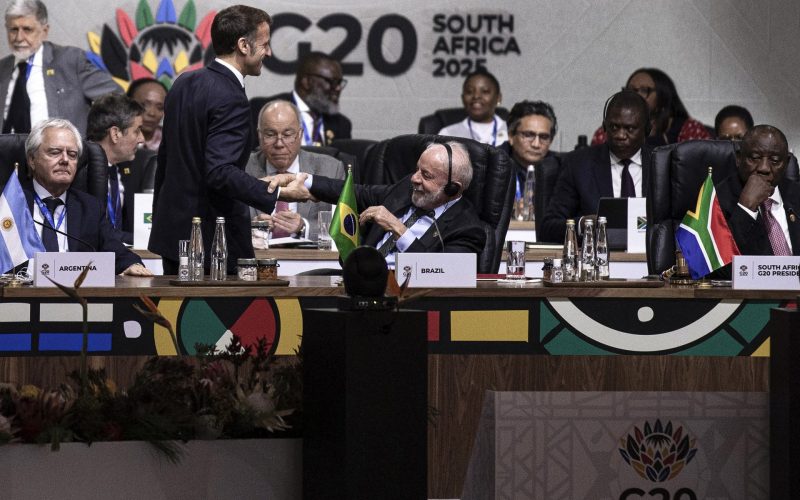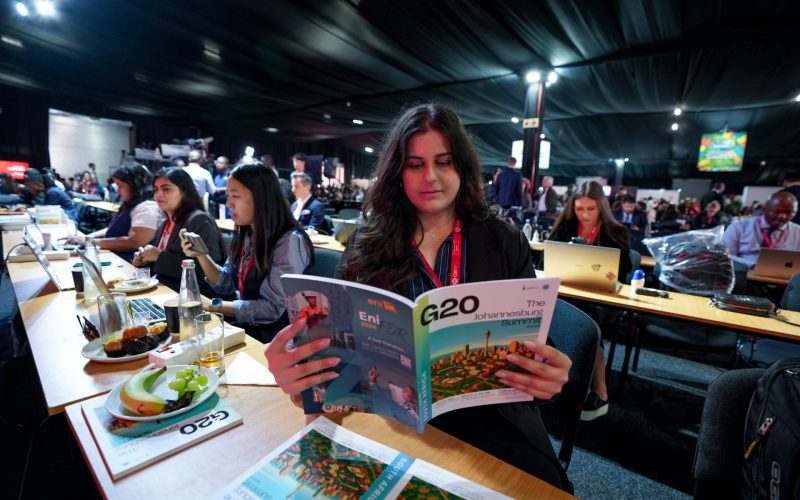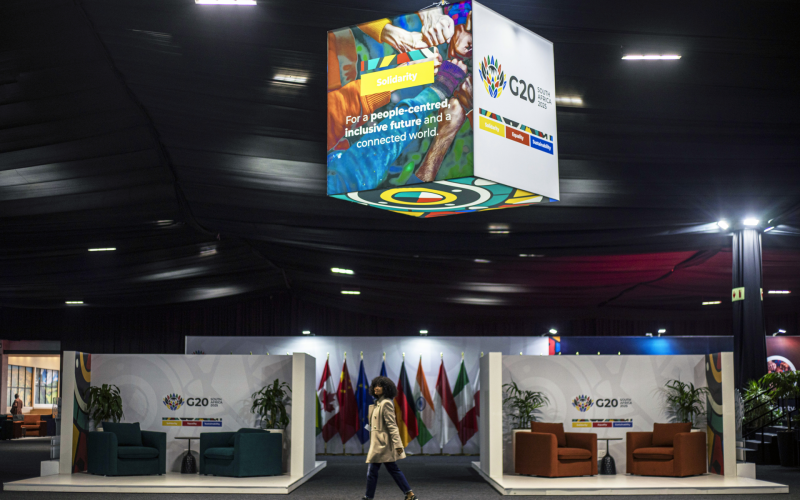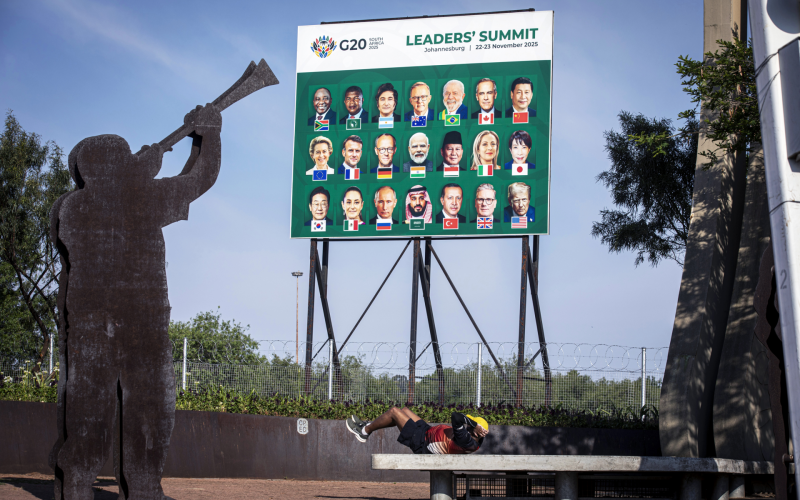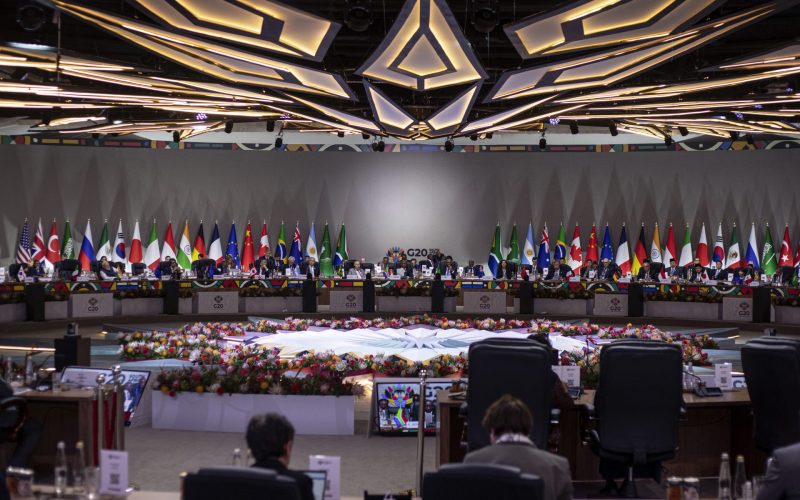Recommendations
- Rwanda shows that a country can leverage a reform culture capital to drive economic growth. Macroeconomic good governance is fundamental to any economic transformation agenda, beyond the availability of natural mineral resources.
- Good administration alone is not enough to accelerate economic transformation. FDI and a vibrant private sector with a diverse funding base are essential to drive economic growth.
- Compact country teams should have strong representation of G20 countries’ private sector. Currently the G20 embassy representatives on team Rwanda are civil servants engaging at the diplomatic level.
- The G20 needs to reform to accommodate Africa. In its current form the CwA still operates
according to the terms and conditions of powerful developed countries.
Executive summary
Rwanda harnessed the G20 Compact with Africa (CwA) initiative as a framework to accelerate and consolidate its economic transformation agenda in line with the country’s Vision 2050. The CwA will enable Rwanda to develop its infrastructure, grow the private sector, eradicate poverty, expand its middle class and increase inflows of foreign direct investment (FDI). All the economic stakeholders are enthusiastic about the direction and potential of the CwA in Rwanda so far. Initial analysis shows a strong take-off in the country in the development of the macroeconomic, business and financial frameworks of the compact. The Rwandese case proves that a reform culture capital is an asset that surpasses the availability of natural resources. Yet despite its reform-centred leadership and its status as a reform-based role model, it is unlikely that Kigali will be able to influence the region, let alone the entire continent.
Introduction
In 2007 Rwanda recorded economic growth of 8% against an average of 3% from 1994–2006. [1] This signified a break with its troubled past and made it the fastest growing economy in Africa. The country’s economic achievement has been attributed to the effectiveness of the national transformation agenda, guided by Vision 2020. Launched in 2002, the focus of Vision 2020 was good governance, an effective state, human capital development, a vibrant private sector, infrastructure development and modernised agriculture. [2] To rejuvenate, accelerate and realign Vision 2020 to new trends in the socio-economic and socio-political space dictated by technology and globalisation, the National Strategy for Transformation (NST) has been adopted. The strategy is a seven-year undertaking that will culminate in Vision 2050. [3] Building on Vision 2020, the NST seeks to achieve high standards of living, the development of modern infrastructure and livelihoods, and transformation for prosperity. Given this national commitment to transformation, it is not surprising that Rwanda seized the opportunity offered by the CwA initiative in 2017. The CwA’s agenda is to ‘foster sustainable and inclusive economic growth and development’, [4] which mirrors Rwanda’s appetite for transformation. Launched under Germany’s presidency of the G20 in 2017, the CwA initiative aims to encourage private investments in infrastructure development that will result in employment creation. The initiative focuses on reforming three economic fundamentals: macroeconomics, business and finance. The African Advisory Group, co-chaired by South Africa and Germany, governs the CwA. The initiative is coordinated by the African Development Bank, the International Monetary Fund (IMF) and the World Bank. [5] Yet the initial conceptual assessment of the CwA reveals that the initiative is not a cure-all for Africa’s economic challenges, as it fails to adequately address issues of inclusive growth and poverty eradication. It is also a departure from the Millennium Development Goals and the Sustainable Development Goals. [6] Economic growth does not necessarily lead to poverty reduction, [7] and the compact does not address clearly the public debt challenge. Furthermore, the CwA ignores the role of small and medium enterprises in African economies. [8]
A preliminary analysis of the CwA in Rwanda shows the initiative’s considerable economic potential. It is in this vein that this policy briefing examines how the CwA framework is consolidating Rwanda’s transformation. It looks at why Rwanda was attracted to the CwA’s framework despite the progress it was making towards transformation over the last two decades. The briefing then considers the potential role Rwanda can play in promoting the CwA in the region and on the continent at large.
Tracing Rwanda’s transformation agenda
In tracing Rwanda’s transformation agenda to the post-genocide era, two phases are identified:
The foundation stage (1994–2004) Emerging from its troubled past with a battered economy and a challenging socioeconomic environment, the foundation stage under the mantra ‘never again’ focused on reconstructing the national institutions that would drive transformation. Social, political, economic and judicial institutions were reconstructed and redefined with humanitarian, financial and technical assistance. With the help of the IMF’s Enhanced Structural Adjustment Facility [9] in 1998, Rwanda was able to repair and expand its infrastructure. By 2007 about 75% of the manufacturing companies were back on their feet and had achieved a 75% capacity utilisation. [10] Driven by Vision 2020, Rwanda adopted the Poverty Reduction Strategy Paper 1, 2002–2006. [11] This medium-term strategy focused on poverty reduction by creating employment and ensuring the financial inclusion of the vulnerable in society. During this period, a solid foundation for the transformation agenda was set. Slowly but surely the unemployment rate started to drop. Poverty levels were reduced from 60.4% in 2000–2001 to 56.9% in 2005. [12] Local and international investor confidence began to grow. FDI increased to $11 million in 2004 from zero in 1994. [13] Macroeconomic stability was achieved. With socio-economic cohesion, evidence-based reform and a national culture backed by solid institutions, Rwanda was on a transformation trajectory by the end of 2004.
The development stage (2005–2018)
Guided by Vision 2020 and leveraging the gains of the first post-conflict decade, 2005–2016 saw the focus shifting to economic expansion and structural transformation of the economy. As an agrarian-based economy at the start of the second decade, agriculture contributed about 80% of economic activity. A total of 14% came from the manufacturing sector and 6% from tertiary industry. [14] Through a wide range of programmes, Rwanda developed the industrial and tertiary sectors of its economy, in the process raising gross domestic product (GDP) to 8% in 2007, with an annual average of 6.5% every year until 2018. [15] Socio-economic transformation in Rwanda was in full swing by the end of the second decade post-genocide. In terms of infrastructure development, considerable progress was recorded in the energy, transport, water and sanitation sectors. Electricity access increased to 34.5% in 2017 – up from 26.97% in previous years. In the transport sector, an 85.27km road network was upgraded and 72.8% of roads are now in a good condition. Kigali International Airport was modernised and the construction of a new airport in Bugesera began in 2018. In the water and sanitation sector, water production increased from 45 031 510m3 to 48 977 110m3 by the end of 2017. [16] The country’s ranking on the Ease of Doing Business Index improved and corruption levels dropped significantly. The governance index also improved, as did its ranking on the Risk of Doing Business Index. Table 1 summarises the transformation indicators.
These indicators confirm Rwanda’s transformational culture capital. Built and nurtured over two decades, its transformational culture is the cornerstone of the country’s socio-economic achievements. In the post-genocide recovery period, Rwanda developed a self-sustaining economy with the support of external funding in the form of grants and technical support. The NST (2017–2024) as a medium-term strategy ushered in the long-term Vision 2050. [17] Core to the vision is consolidating and accelerating the transformation agenda. The five pillars of the agenda are: quality of life, modern infrastructure and livelihoods, transformation for prosperity, values for Vision 2050, and international cooperation and positioning. [18] Yet despite these achievements, the Rwandese economy has infrastructure deficiencies, balance of payments (BoP) challenges, poor human capital development, and a very limited private sector. [19]
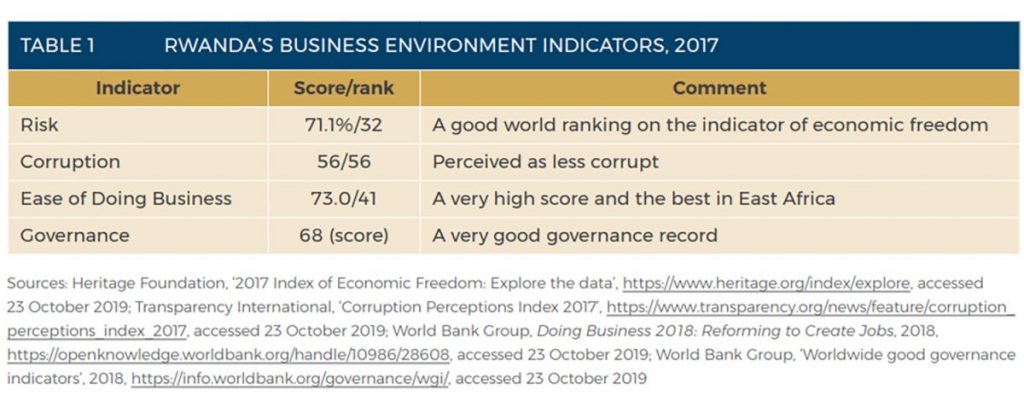
Rwanda’s transformation agenda and CwA: The attraction
What attracted Rwanda to the CwA? The initiative came at a time when Rwanda was looking for ways to accelerate and consolidate its transformational agenda, and the CwA was a suitable vehicle to achieve the acceleration. Vision 2050, with the NST as its prelude, addresses the deficiencies of the previous programme, while the CwA provides the framework to attend to them. [20] Central to the CwA initiative is infrastructure development. [21] The availability of safe, reliable and affordable infrastructure, as alluded to by the Economic Development Poverty Reduction Strategy 11 (2013–2018), is essential for the acceleration and consolidation of the country’s socio-economic transformation. Most of Rwanda’s infrastructure development has been driven by the government and the donor community. The financial demands of infrastructure engagement require the participation of the private sector. [22] The benefits of private sector involvement in infrastructure development include efficient use of resources, livelihood opportunities and employment creation, and demand-led provisions that both address market needs and are innovative in nature. [23]
In the first two decades post-genocide, the government encouraged private sector participation in infrastructure development through the promotion of the Private Sector Participation Programme. [24] The initiative has not had much financial and technical support from the local private sector, for the following reasons:
- The private sector is small. It comprises small enterprises with low returns and a few large businesses. The Private Sector Development Strategy’s mandate between 2013 and 2018 was aimed at stimulating the growth of the private sector. [25]
- The stock market is still young. It was founded in 2005 and lists seven securities. [26]
- A limited private sector means a limited middle class, [27] and Rwanda is no exception. A small middle class means low demand for goods and services.
With a small private sector and constrained capacity to participate in infrastructure development, Rwanda has to find other players beyond the donor community to address its infrastructure deficit. The country needs a railway line to link up with the subregion and reduce the cost of transport. The Isaka–Kigali rail project needs financing of $1.3 billion. [28] Other notable infrastructure deficits are in electricity, road networks, water and sanitation, estimated at $14 billion. [29] The CwA initiative provides Rwanda with an opportunity to attract FDI in the form of a public–private partnership (PPP) model in infrastructure development.
PPPs are likely to create jobs and reduce unemployment in Rwanda, which will contribute to poverty reduction by keeping up with demand and expanding services, resulting in a recruitment drive. [30] Between 2003 and 2014, FDI from PPPs created 600 000 jobs in Africa. [31] Most of these jobs were in low-skilled sectors. In general, PPPs are attractive to Rwanda because they are an off-the-balance-sheet arrangement; they do not have a direct impact on the country’s debt levels. PPPs lessen the government’s financial burden in infrastructure and mitigate Rwanda’s over-reliance on public development funding. PPPs also bring technical resources.
However, PPPs do carry a hidden risk – should the private risk arise, it can easily translate into public debt, thereby increasing debt levels in Rwanda. Furthermore, PPPs adopt the World Bank Guidance, which puts private interests ahead of public interests. For example, after natural disasters the government is mandated to compensate the private investor for any losses. Furthermore, should the host government make legislative changes that affect PPPs negatively, it has to compensate them. In Mexico the government took over 23 projects and paid outstanding debt to Mexican banks (totalling about $5 billion) and construction companies (totalling about $2.6 billion). [32] The concept of country ownership in the CwA is thus compromised. This is compounded by the fact that, should a dispute arise within a PPP, it is settled in the International Court of Arbitration. [33]
The CwA initiative’s appeal to Rwanda can be traced to the reform theme. The CwA advocates evidence-based reforms. Rwanda has built a reform culture capital that has driven its transformation so far. The CwA mirrors what Rwanda has successfully employed to turn around its economy. It is not surprising that the country joined the initiative upon its announcement.
The administrative reforms that Rwanda has achieved in the last decade are, on their own, not enough to allow it to achieve the short-term goals of Vision 2050. Rwanda needs private finance. Having attained macroeconomic stability and good governance, the country is a good destination for private investment, and the CwA is the platform to assist Rwanda in that regard. Administrative reforms need to be accompanied by sustainable costs of doing business, hence the CwA model’s appeal.
To accelerate and consolidate transformation in a bid to eradicate poverty and propel the economy towards a middle-income-country status, Rwanda needs to address its infrastructure deficiencies. With reduced donor community funding and the relatively limited local private sector, the government will struggle to achieve this. The CwA, through the G20 embassies and international organisations (IOs), offers Rwanda a good framework to attract FDI in a PPP model. As Rwanda has an impressive reformer curriculum vitae and the CwA a reform orientation, common ground was found. The CwA is now central to consolidating and accelerating Rwanda’s economic gains.
CwA’s impact on Rwanda so far
While it is too early still to come to a conclusion about the CwA’s impact on Rwanda, an initial assessment reveals some positive initiatives in the last two years. Having already achieved macroeconomic stability, Rwanda’s compact team had a head start.
In the macroeconomic sphere, Rwanda made noticeable progress in domestic revenue mobilisation. The two indicators for this commitment were to increase the tax-to-GDP ratio to 15.3% for the 2017/18 [34] financial year and to establish a financial swap to lower private sector investment finance costs. Both reform indicators were achieved. Through innovative tax administration, the tax-to-GDP ratio stood at 16.6% in 2018. [35] Even though this was well above the commitment target, the ratio still falls below the average in 21 African countries. [36] Leveraging on this reform, tax contributed 53.4% to the 2018/19 national budget. [37] In terms of the second indicator, the National Bank of Rwanda established a swap with commercial banks to ensure the availability of forex. Forex availability improved by 40% in the fiscal year 2017/18. [38] This significantly lowered private sector investment costs. FDI increased from $270 million in 2017 to $305.5 million in 2018. [39] The Volkswagen-Moving Rwanda Project is the flagship of CwA-induced FDI in Rwanda. Volkswagen has invested $20 million in this project, with a local assembly plant producing up to 5 000 vehicles per year and creating 1 000 new skilled jobs over its lifespan. [40] Although it will be difficult to attribute this rise in FDI to the CwA initiative alone, FDI had decreased two years before the CwA initiative, standing at $223.3 million in 2015 and $266.3 million in 2016. [41]
In the business framework, Rwanda made progress by attracting more investment into its industrial parks. The government is conducting a feasibility study in order to formulate a policy on industrial parks. [42] Reducing the number of investment complaints is another indicator of progress in this focus area of the CwA. In this regard, quarterly investment roundtable engagements to resolve investor issues were established. Systemic investment response mechanisms were also set up. [43] The other indicator in this category is an increased number of new investors attracted to Rwanda. Tentatively, there are various projects for private investors. However, more feasibility studies of new projects are needed.
The CwA financial framework in Rwanda holds a lot of promise, as indicated by the number of projects and undertakings underway. As a direct CwA benefit, Rwanda has received $150 million in investment leveraged by the Affordable Housing Fund. The scheme is financed by the World Bank and the International Development Association. [44] The project is likely to create employment and help to reduce poverty.
Another development is the increasing number of exporters accessing the Export Growth Facility (EGF). The criteria for accessing the EGF are being reviewed to ensure greater takeup. This is likely to directly address the BoP challenge Rwanda is currently facing. Efforts are also underway to incentivise private investment in the agriculture sector. Various components of the Agriculture Risk Sharing Facility are being developed, while a feasibility study is being conducted to find an optimal way of bringing all the components together.
As the CwA initiative is still in its infancy stage, its impact is not yet clear. All the same, this analysis of Rwanda shows the CwA’s potential to eradicate poverty, increase employment, contribute to infrastructure development, grow the private sector, grow the middle class, increase FDI and close the BoP gap.
CwA from Rwanda, through Rwanda to the region and continent
Rwanda is the only country in East Africa to have signed up to the CwA initiative (if Ethiopia is considered to be in the north-east). Yet despite its shortcomings, [45] the CwA is likely to improve most African economies. In West Africa, where take-up is concentrated, initial assessments show the CwA to be contributing to regional integration. [46] All CwA countries improved their Ease of Doing Business rankings from the previous year and received more FDI than non-CwA countries.
Can Rwanda influence the rest of East Africa to take up the CwA initiative? Or even the whole of Africa? Rwanda’s influence in Africa has grown significantly in the last two decades. The charismatic leadership of President Paul Kagame and the country’s reform culture capital are two major factors that extend the country’s influence. As the AU chair in 2018, Kagame advocated reforms centred on ending corruption and ensuring good governance. [47] As a role model for evidence-based reformers, Kagame could generate interest in the CwA concept. Currently, Rwanda is the chair of the East African Community (EAC), a position he could leverage to influence uptake of the CwA in East Africa.
Despite this, Rwanda’s ability to effect uptake of the CwA in East Africa and beyond is minimal. It joined the EAC in 2007, and is thus a fairly new member. In addition, its economy is too small in the region to influence the initiative.
Given the fact that the initiative is reform-based and requires a commitment to transformation, country ownership is key. Such commitments should be country driven rather than being influenced by external forces. Should it be seen as an external prescription for Africa’s economic problems, the odds of its going the same route as the 1980s and 1990s’ Structural Adjustment Programme are high. [48]
CwA lessons from Rwanda
- The Rwandese case shows that a country can leverage a reform culture capital to drive economic growth. Macroeconomic good governance is fundamental to any economic transformation agenda, beyond the possession of significant natural mineral resources.
- Good administration alone is not enough to accelerate the transformation of an economy. FDI and a vibrant private sector with a diverse funding base are essential to drive economic growth. In Rwanda, the local private sector plays a limited role in the economy. A strong stimulation initiative aimed at the local private sector is needed in the medium to long term to expand the middle class, which is still mostly inactive in the economy. The CwA is likely to help Rwanda achieve this.
- The compact country teams should have significant representation of G20 countries’ private sector. Currently the G20 representatives who are part of team Rwanda are civil servants engaging at the diplomatic level. (The international private sector needs to be part of a compact country team). [49]
- The G20 needs to reform to accommodate Africa. In its current form the CwA still operates under the terms and conditions of powerful developed countries. [50]
There is consensus and confidence among the G20 embassies in Rwanda, the government, the private sector and the IOs that Rwanda is a perfect template for the CwA initiative. Without natural mineral resources, the country needs to make its agriculture and service sectors attractive to investors. The trend among compact countries elsewhere shows a strong relationship between natural resources and a high inflow of FDI. [51]
Conclusion
This policy briefing traced Rwanda’s transformation agenda from the post-genocide era to 2019. It concludes that the CwA has the potential to assist Rwanda to achieve its Vision 2050. So far, the macroeconomic, financial and business frames are showing strong initial developments in Rwanda. However, beyond acting as a role model reformer, Kigali’s ability to influence the spread of the CwA initiative in East Africa and across the continent as a whole is limited. The key lessons from Rwanda’s case are that a reform culture capital is an asset for economic transformation. Good administration is not enough, hence the need for the finance and business frameworks.
Acknowledgement
The author is grateful to Professor Richard Shambare, from the University of the Western Cape’s School of Business & Finance, for his guidance and review of this paper.
SAIIA would like to thank the Konrad Adenauer Stiftung (KAS) for funding this research.
Footnotes
[1] Ansoms A & D Rostagno, ‘Rwanda’s Vision 2020 halfway through: What the eye does not see’, Review of African Political Economy, 39, 133, 2012, pp. 427–450.
[2] Rwanda, Ministry of Finance and Economic Planning, ‘Rwanda Vision 2020’, 2002, http://dad.minecofin.gov.rw/images/MINECOFIN %20-%20Report_English%20Online.pdf, accessed 10 October 2019.
[3] World Bank, ‘Rwanda Global Inclusion (Global Findex) database 2017’, https://datacatalog.worldbank.org/dataset/rwanda-globalfinancial-inclusion-global-findex-database-2017, accessed 30 October 2019.
[4] G20 Germany, ‘G20 leaders’ declaration: Shaping an interconnected world’, Hamburg, 7–8 July 2017, http://www.g20.utoronto.ca/ 2017/2017-G20-leaders-declaration, accessed 22 September 2019.
[5] World Bank, 2017, op. cit.
[6] Kappel R & H Reisen, G20 Compact with Africa: The Audacity of Hope, Friedrich Ebert Stiftung, November 2019, https://www.fes. de/referat-afrika/neugikeiten-referat-afrika/studie-g20-compact-with-africa, accessed 20 October 2019.
[7] Rainer T et al., ‘African Economic Development: What Role Can the G20 Compact Play?’, DIE (Deutsches Institut für Entwicklungspolitik) Discussion Paper, March 2018, https://www.die-gdi.de/uploads/media/DP_3.2018.pdf, accessed 13 October 2019.
[8] Ibid.
[9] IMF (International Monetary Fund), ‘IMF concessional financing through the ESAF’, April 2004, https://www.imf.org/external/np/exr/ facts/esaf.htm, accessed 15 October 2019.
[10] Gathan S & D Soelinga, Understanding Rwanda’s Agribusiness and Manufacturing Sectors, IGC (International Growth Centre), 2013, http://www.value-chains.org/dyn/bds/docs/862/UnderstandingRwandaAgribusinessandManufacturingSe.pdf, accessed 2 November 2019.
[11] Rwanda, Poverty Reduction Strategy Paper, June 2002, http://siteresources.worldbank.org/INTPRS1/Resources/Country-Papersand-JSAs/Rwanda_PRSP.pdf, accessed 25 October 2019.
[12] UNDP (UN Development Programme), Assessment of Development Results: Rwanda, May 2008, http://www.oecd.org/countries/ rwanda/41105593.pdf, accessed 2 November 2019.
[13] UNCTAD (UN Conference on Trade and Development), Investment Policy Review: Rwanda, 2006, https://unctad.org/en/Docs/iteipc 200611_en.pdf, accessed 2 November 2019.
[14] Ibid.
[15] UNDP, op. cit.
[16] Sustainable Development Goals, 2019 Rwanda Voluntary National Review (VNR) Report, June 2019, https://sustainabledevelopment.un.org/content/documents/23432Rwanda_2019_VNR_Final_Draft___17_06_2019.pdf, accessed 1 November 2019.
[17] Rwanda, Ministry of Finance and Economic Planning, op. cit.
[18] Ibid.
[19] AfDB (African Development Bank), African Economic Outlook 2019, https://www.afdb.org/en/knowledge/publications/africaneconomic-outlook, accessed 14 October 2019.
[20] G20 Compact with Africa, https://www.compactwithafrica.org/, accessed 8 October 2019.
[21] Ibid.
[22] Rwanda, Ministry of Trade and Industry, Rwanda Private Sector Development Strategy 2013 2018,2012, http://www.minicom.gov.rw/fileadmin/minicom_publications/Planning_documents/Private_Sector_Development_Strategy.pdf, accessed 30 October 2019.
[23] UN ESCAP (UN Economic and Social Commission for Asia and the Pacific) & UN Habitat, The State of Asian and Pacific Cities 2015: Urban Transformations – Shifting from Quantity to Quality, 2015, https://www.unescap.org/sites/default/files/The%20State%20of%20Asian%20and%20Pacific%20Cities%202015.pdf, accessed 2 November 2019.
[24] Rwanda, Ministry of Trade and Industry, 2012, op. cit.
[25] Ibid.
[26] Rwanda Stock Exchange, http://www.rse.rw/, accessed 3 November 2019.
[27] UN ESCAP & UN Habitat, op. cit.
[28] Rwanda, Ministry of Infrastructure, Annual Report 2018, http://www.reg.rw/fileadmin/user_upload/Final_ESSP.pdf, accessed 3 November 2019.
[29] Ibid.
[30] Hodge GA & C Greve, ‘Public–private partnerships: An international performance review’, Public Administration Review, 67, 3, 2007, pp. 545–558.
[31] Chakrabarty M, ‘G20’s Compact with Africa: How beneficial is it really?’, Observer Research Foundation, Raisina Debates, 28 June 2019, https://www.orfonline.org/expert-speak/g20s-compact-with-africa-how-beneficial-for-africa-is-it-really-52528, accessed 16 October 2019.
[32] Vickram C, ‘Famous PPP Failure: Road Concession Program in Mexico’, World Bank, 2008, https://siteresources.worldbank.org/INTECAREGTOPTRANSPORT/Resources/SuccessesandFailuresPPPprojects15JUN08, accessed 28 October 2019.
[33] Keil K, ‘The G20 Compact with Africa: Innovation Partnerships or Business as Usual?’, Heinrich Boll Stiftung, 13 December 2017, https://us.boell.org/en/2017/12/13/g20-compact-africa-innovative-partnerships-or-business-usual, accessed 20 October 2019.
[34] Compact with Africa, G20 Compact with Africa: Compact Monitoring Report, April 2018, https://www.compactwithafrica.org/ content/dam/Compact%20with%20Africa/reports/G20-CWA-%20Full%20Report.pdf, accessed 30 September 2019.
[35] OECD (Organisation for Economic Co-operation and Development), ‘Revenue Statistics in Africa 2019: Rwanda’, https://www.oecd. org/countries/rwanda/revenue-statistics-africa-rwanda.pdf, accessed 9 November 2019.
[36] Ibid.
[37] PWC (PricewaterhouseCoopers), ‘Reimagine the Possible: Rwanda’s 2018/2019 National Budget – Insights and Highlights’, https:// www.pwc.com/rw/en/assets/pdf/rwanda-budget-analysis-2018-19.pdf, accessed 16 November 2019.
[38] OECD, op. cit.
[39] Trading Economics, ‘Rwanda foreign direct investment’, 2018, https://tradingeconomics.com/rwanda/foreign-direct-investment, accessed 13 November 2019.
[40] IFC (International Finance Corporation), Trends in FDI and Cross-Border Investments in Compact with Africa Countries: Interim Monitoring Report, 2018, https://www.compactwithafrica.org/content/dam/Compact%20with%20Africa/reports/monitoring%20 report.pdf, accessed 16 November 2019.
[41] Trading Economics, op. cit.
[42] Compact with Africa, op. cit.
[43] Ibid.
[44] Ibid
[45] Keil K, The G20 Compact with Africa: Innovation Partnerships or Business as Usual?, Heinrich Boll Stiftung, 13 December 2017, https://us.boell.org/en/2017/12/13/g20-compact-africa-innovative-partnerships-or-business-usual, accessed 20 October 2019.
[46] IFC, op. cit.
[47] See Kagame P, ‘Kagame’s acceptance speech on taking over as new AU chair’, The New Times, 29 January 2018, https://www. newtimes.co.rw/section/read/228577, accessed 18 November 2019.
[48] Rahman RI, Consequences of Structural Adjustment Policies on the Poor, SAPRIN (Structural Adjustment Participatory Review International Network), 2000, http://www.saprin.org/bangladesh/research/ban_poverty.pdf, accessed 12 December 2019.
[49] Personal interview, Leonard Rugwabiza, Economic Advisor, Ministry of Finance and Economic Planning, Kigali, 24 November 2019.
[50] Ibid.
[51] IFC, op. cit

